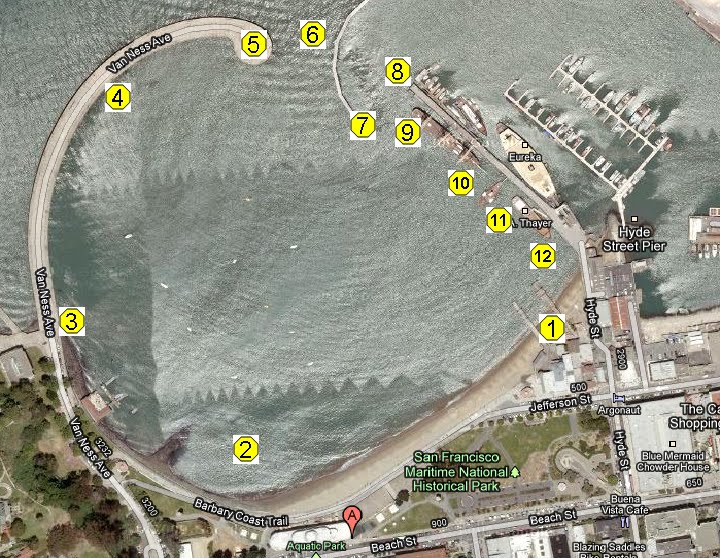Thursday 02/11/10
Coach Val closed a lane at Koret pool for Peter Perez and me today. It was the occasion of our four-hour swim. Peter’s window starts a month before mine, but for now our training schedules coincide. We piled our various nutrition concoctions at poolside and hit the water at 6:10a.
Having a training companion was a real treat. Peter and I are pretty well matched in speed. We were able to settle into a steady pattern and gauge our speed against one another. Coach Val recorded split times on the half hour and validated that the pace was consistent.
Just as importantly, Coach was very happy with my stroke. He pronounced it, “very stable.” Compared to my original boogie-woogie stroke, it was also a much slower rotation rate. Lindsay laughed when she saw the video and said, “It looks like you’re going sooooo slow!” But in fact, the new stroke has shaved about 12 seconds off each hundred yards—about a 10% improvement in actual speed. Three and a half hours into the swim, a young man dropped into the lane next to me. His rotation rate was about twice mine and his speed was about half my speed. He would wait at the end of the lane for me to arrive and then race me back across, experimenting with increasing head starts. I could see the wonder and frustration in his countenance. Peter noticed the young man’s fascination with us as well. I was reminded of what a pitiable swimmer I was when I joined the Dolphin Club. I owe a big debt of gratitude to Coach Val.
This swim was also a chance to work on nutrition. Research has convinced me to make maltodextrin powder the foundation of my feeding. Different people have different preferences and the raw science of endurance nutrition seems to be subject to distortion in the service of a particular sport or a paid product endorsement. However, picking through the various information available, I’ve drawn a few preliminary conclusions.
The main conclusion is find what works for you and stick with it. Everyone seems to agree on this. Captain Webb made the crossing on bread, barley soup, and beer. Some swimmers have made the crossing on Gatorade. One reportedly succeeded on chocolate. The six inches between the ears are arguably the most important distance relative to a successful 21 mile crossing. Having confidence in your feeding choice is a key to working on the six inches.
My choice for primary feeding source is a maltodextrin powder. For one thing, it is almost flavorless and can be mixed with water or some other flavored liquid. For another thing, it is a straight carbohydrate feed and the literature indicates that carbohydrates provide fuel more quickly than fat and over a longer period of time than sugar. For another thing, during the course of a twelve or fifteen hour swim, the additives in some feeds can far exceed the maximum daily allowance. I’d prefer to add these separately as needed.
This swim boosted my confidence quite a bit. Next week, I’ll swim from AT&T Park back to the clubs’ beach with the Southend Sunrisers. That swim will give me two hours in the open water. The six inches between my ears should benefit from that as well.
6 years ago


No comments:
Post a Comment